In this article I’ve included my easy sourdough pizza recipe. It produces pizza with an incredible flavour and texture that simply cannot be matched. Homemade sourdough pizza has to be one of the best taste and texture sensations around.

I think many people are put off because they think that making sourdough pizza at home is really difficult. In truth, it isn’t. It just takes a bit of understanding and a little practice.
Fortunately, in this article I explain everything you need to know in the simplist way possible. And my recipe at the bottom of the page combines everything together in easy step-by-step instructions. I’ve also designed the recipe so that the timings can fit around your daily routine.
Now, let’s get into everything you knead to know (pun intended!) about making sourdough pizza. If you already know what you’re doing, you can click here to skip ahead to the recipe.
The first question many people ask is why make sourdough pizza dough? Doesn’t it seem like a lot of effort when you can just buy yeast?
Whilst sourdough does require a bit more work, I think that makes it more rewarding. One thing’s for sure, no other type of dough can match the flavour of sourdough pizza dough.
As the name sugeests, the flavour tends to be a bit more sour, but it also tends to be more complex. Sourdough also creates an amazing texture in the pizza, with light and airy crusts.

Making sourdough pizza dough is something that I think everyone has to try at some point. You may be surprised at how much you enjoy the process, as well as eating the pizza! Be sure to check out my article on what is sourdough pizza here for more information.
Before going any further, I think we need to quickly cover sourdough starter.
The starter is basically like the magic ingredient. It is simply a jar of dough (flour and water) that contains wild yeast which has been harvested through feeding. It is this wild yeast inside the starter that proves the pizza dough, producing the wonderful texture and flavour.
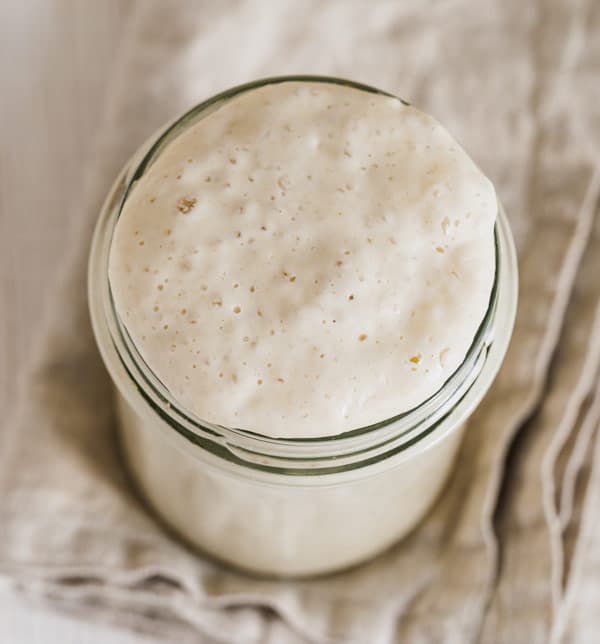
So for this sourdough pizza recipe, as with any sourdough recipe, you will need a starter. Be sure to check out my sourdough pizza starter recipe here. I also cover everything you need to know about sourdough starter in general.
Fortunately, a sourdough starter is really easy to make. It just takes 1-2 weeks of “feeding” (topping it up with flour and water) until it’s ready to be used for pizza making. Once you’ve made your starter you can keep it in the fridge and take it out whenever you want to make sourdough pizza.
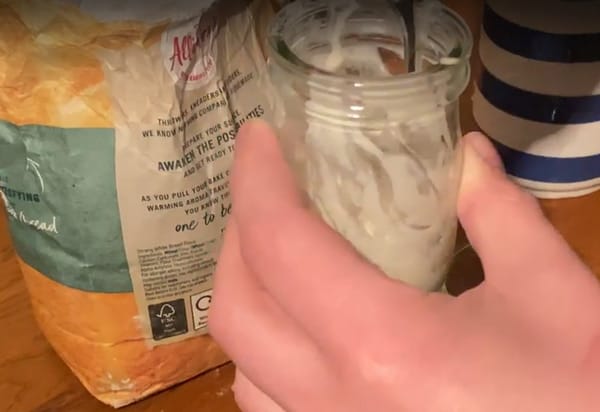
Once you’ve made your starter, you can keep it in the fridge. And as long as you feed your starter every once in a while, it will last indefinitely. The oldest starters in the world are over 100 years old!
I’ve found a lot of people asking whether there is a sourdough pizza recipe without starter but the truth is that it’s not possible. Starter is the key ingredient to sourdough and without it, dough simply isn’t sourdough.
The closest you can get to sourdough pizza without using a starter has to be poolish pizza. Poolish was developed as a way to replicate sourdough with regular commercial yeast. It can’t match the flavour of sourdough but it produces an excellent texture and it is a bit easier to work with.
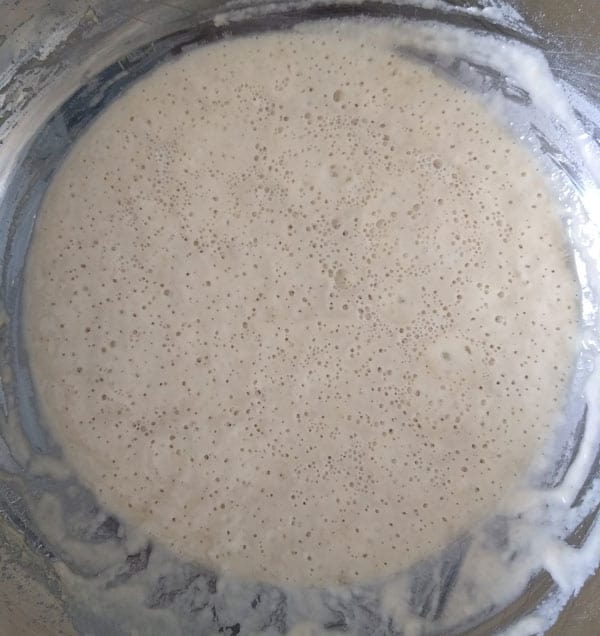
For this reason, you may want to start off by trying my poolish pizza recipe here before moving onto my sourdough pizza recipe at the bottom of this page.
Some sourdough pizza recipes include added yeast as well as starter. The main reason for this is to speed up the fermentation. But in a true sourdough recipe there is no yeast added, it is the wild yeast in the sourdough that proves the pizza.
In my view, there is little point in adding yeast to speed up the prove since long proves help to produce more flavour. And after all, surely we are making sourdough in order to get the deep and complex flavour?
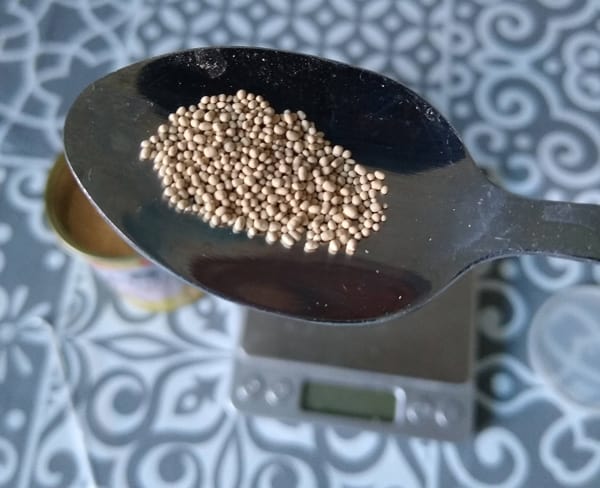
But there’s no right or wrong to make pizza so feel free to experiment with this if you like. If you’re pushed for time, adding a pinch of yeast could be very handy to speed the process up a little.
Having said that, in this sourdough pizza recipe I haven’t included any added yeast. I’ve tried to keep the recipe as simple and traditional as possible with just 4 ingredients:
You may notice that this is essentially the same list of ingredients as regular dough. The only difference is that we’re using the wild yeast in our starter rather than adding yeast (isolated yeast cells).
Something else that I always recommend doing is making a levain (pronounced “le van”) from your starter.
A levain is basically just a sourdough starter that has been recently fed and is ready to use in a recipe. Feeding the starter before using it ensures that it is “active”, encouraging a strong fermentation and promoting better flavour. It also ensures that we have enough starter for our recipe.
Levain (pronounced “le van”) is the French word for “rise” and basically just means “proof”. In English, the closest word is “levean”, as in “leavened bread” (meaning bread that has been proved with yeast).
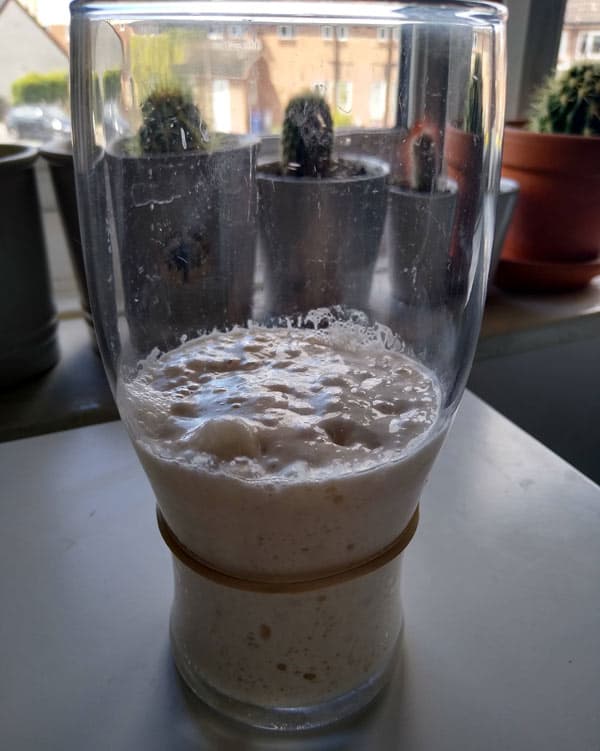
Personally, I think that making a levain first is the best approach to sourdough. It means that you can keep a very small amount of starter in the fridge. Then, when you want to make sourdough pizza, you can feed your small starter, building it up to a good amount for your recipe.
Also, when a starter has been kept in the fridge, the yeast becomes dormant. Making a levain “wakes up” the yeast by providing it with a good feed before use. This should help to ensure strong fermentaton. One thing to note is that if your starter has been in the fridge, it’s best practice to allow it to come to room temperature first.
Once you have made your levain, you should allow it to proof before adding it to your recipe. This is known as using the starter at it’s “peak”, which occurs when it has risen as high as it can (about double in size or more). This typically takes around 10-12 hours at room temperature.
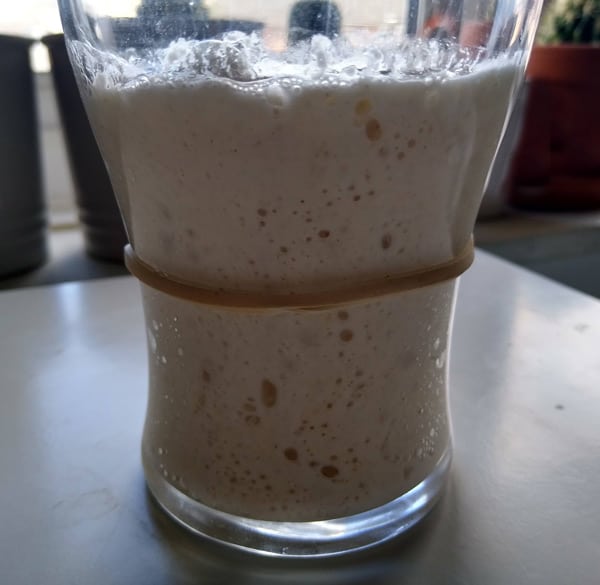
Using your levain when it is at it’s peak should also help to ensure the best fermentation possible. For more information on this, check out my sourdough starter article (with recipe) here.
One of the benefits to making sourdough pizza dough with levain is that it allows for versatility. You can build your starter up to have as much as you need for your recipe.
For example, let’s say you have 50g of starter but you need 250g for the recipe. You can take your 50g starter and feed it 100g flour and 100g water to give you 250g of starter (levain) – this is called “building your levain”.
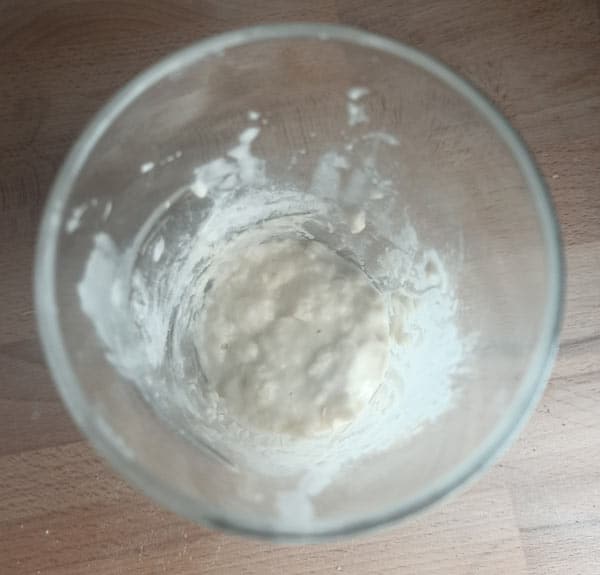
Note: Always remember to save some sourdough for next time! I like to make more levain than I need and save 50g of it. In the above example, with the 250g levain, I’d have 200g to use in the recipe and 50g to save (in the fridge).
Notice that in this example, I fed the starter with twice it’s weight in flour and twice it’s weight in water. This is known as a 1:2:2 feeding ratio – I cover this in more detail in my sourdough starter recipe. Don’t worry too much about understanding this, you can still carry out the recipe at the bottom of this page.
One of the advantages to this feeding ratio (as opposed to 1:1:1) is that the starter can be quickly built up for the recipe (it becomes 5 times it’s initial size after just 1 feeding).
If you want to take this a step further, or if your recipe calls for more starter, you can even feed it again. For example, you can then feed your 250g levain with 500g flour and 500g water to give you a 1250g levain. This has the added benefit of creating an even more active sourdough.
The amount of starter you need for pizza depends on how many pizzas you are making and how long you are proofing for. If you are making a lot pizzas then you’ll need more starter. But for longer proofs you don’t need as much starter as you would for shorter proofs.
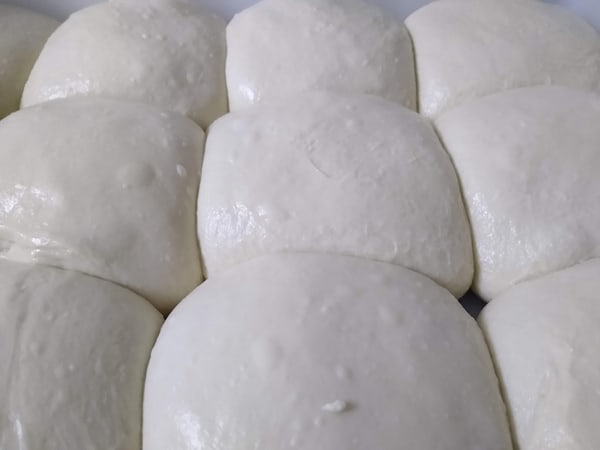
In general, I recommend a roughly 24 hour room temperature proof. With this length of proof, you should achieve excellent taste and texture without sacrificing the strength of the dough. We also don’t need to use much starter for a 24 hour prove.
The longer dough proves for, the more strength it loses. This is dependant on the particular flour you are using, and how much strength it tends to provide. But in general, 24 hours shouldn’t cause any issues, whereas 48-72 hours may do.
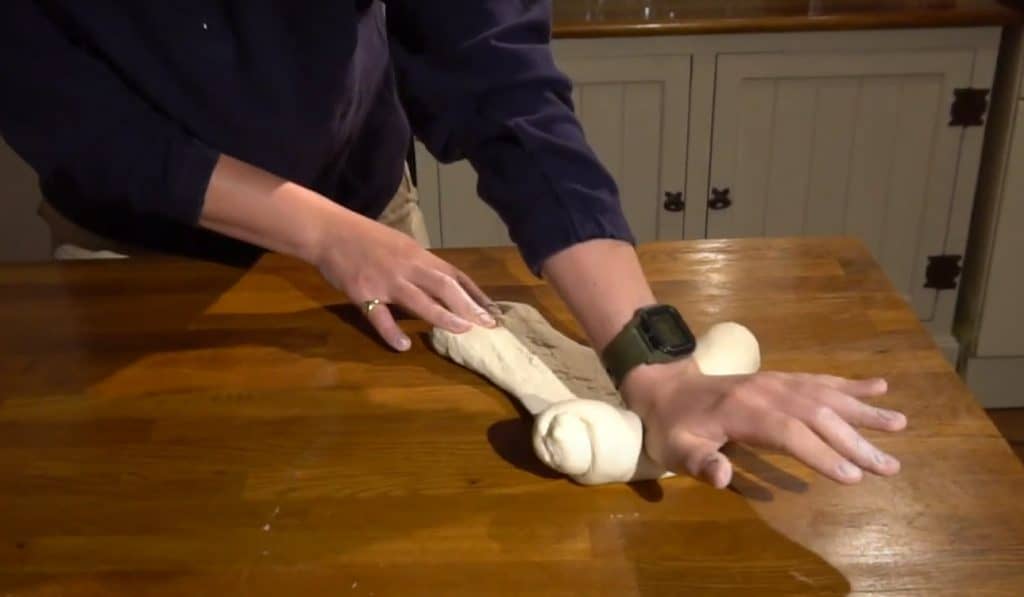
24 hours also makes timings straightforward. Let’s say that you want pizza at 7pm on Saturday night. You just need to mix the dough at 7pm on Friday night – easy!
The best way to measure the amount of sourdough needed is by comparing it to the amount of flour in our recipe. This is known as baker’s percentage, and can be used for all ingredients, not just sourdough. Check out my article on baker’s percentage here if you haven’t already.
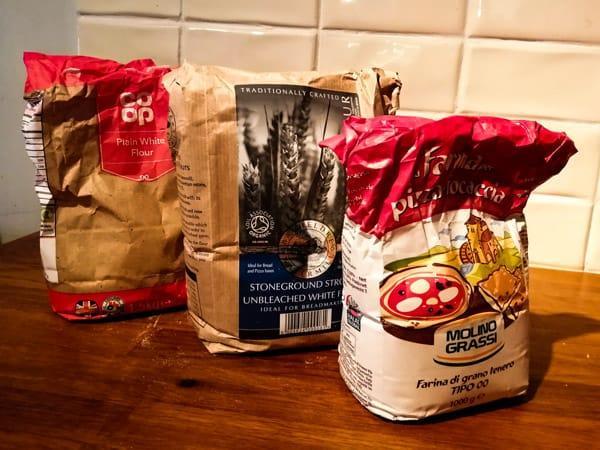
In general, I’ve found that around 15% sourdough is about right for a room temperature proof of around 24 hours. Basically, this means that 15% of the flour in our recipe comes from the soudough. If we follow this rule, our dough should prove in around 24 hours at room temperature.
But don’t worry too much about this. You don’t need to know exactly how these ratios and percentages work, you can still follow along with the recipe.
The recipe I have included below is the perfect sourdough pizza recipe for a pizza oven. There is no oil or sugar in the dough as these can lead to burning in the extreme temperature of a pizza oven.
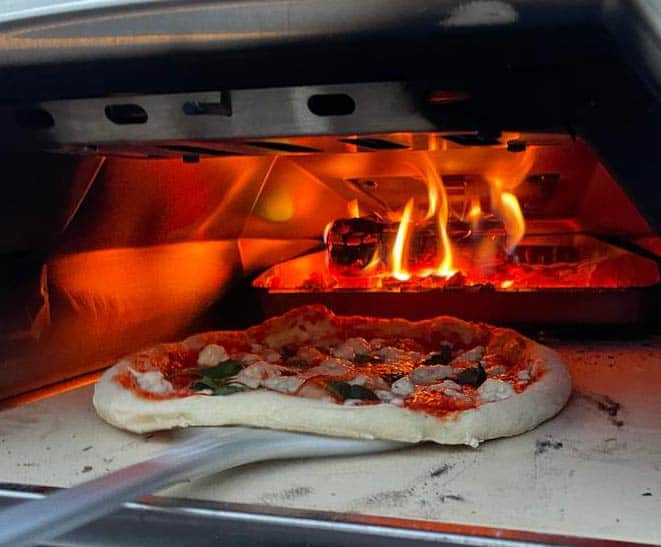
Having said that, there’s no reason why you can’t make this recipe in a regular oven. You will just need to cook the pizza for around 5-7 minutes instead of the 60-90 seconds in a pizza oven. In general, you’ll want to get your oven as hot as possible (around 260C/500F).
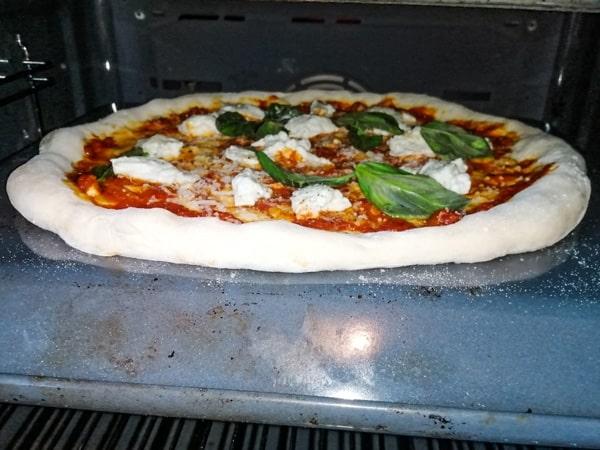
When cooking your pizza in a regular oven, you can turn a baking tray upside down if you don’t have a pizza stone. This little hack works quite well as it stops the lip of the tray getting in the way.
This sourdough pizza recipe works great in an Ooni pizza oven. It should make a pizza that is around 10-12 inches in size, which should fit in every Ooni pizza oven, and any similar portable pizza oven. If you’re using a regular home oven, just ensure that your baking tray or stone is large enough.
I have an Ooni myself and I have had excellent results with this sourdough pizza recipe. Just be sure to get the temperature of the oven to the optimal range and ensure there are plenty of open flames before launching.
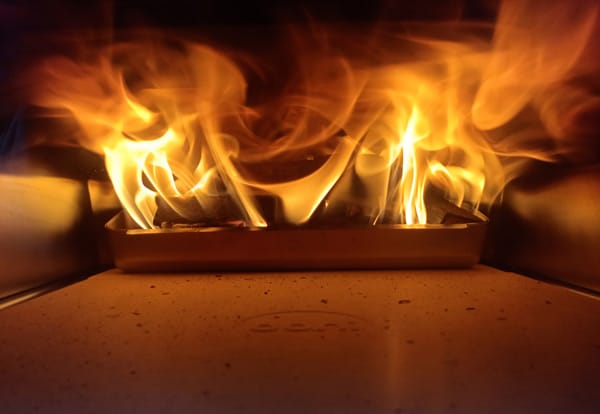
For Neapolitan pizza, I have found that around 420C/800F – 450C/850F (stone temperature) works best in most Ooni ovens. Much lower than this and the pizza takes too long to cook (more than 90 seconds), becoming overly crispy. Much higher than this range and you risk burning the pizza and possibly getting some undercooked parts too (raw dough).
Now you’ve learnt everything you need to know, it’s time to get into the sourdough pizza recipe. I’d like to make a couple of brief points before diving in.
Firstly, I can highly recommend trying my poolish pizza recipe here if you’ve never made sourdough pizza before. The poolish method is similar to sourdough but a bit easier. I think in general it’s probably a good idea to start with that before moving onto sourdough.
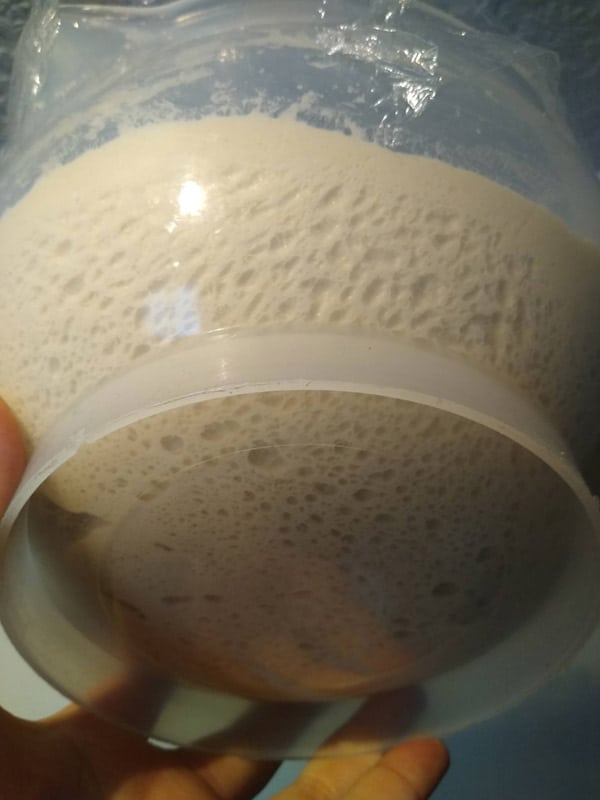
Secondly, I can also highly recommend checking out my pizza school series (with videos) if you haven’t aready. There’s 6 parts covering each step of the pizza making process in great detail, and with in-depth videos. The techniques shown can be used in any pizza making, including in this sourdough pizza recipe.
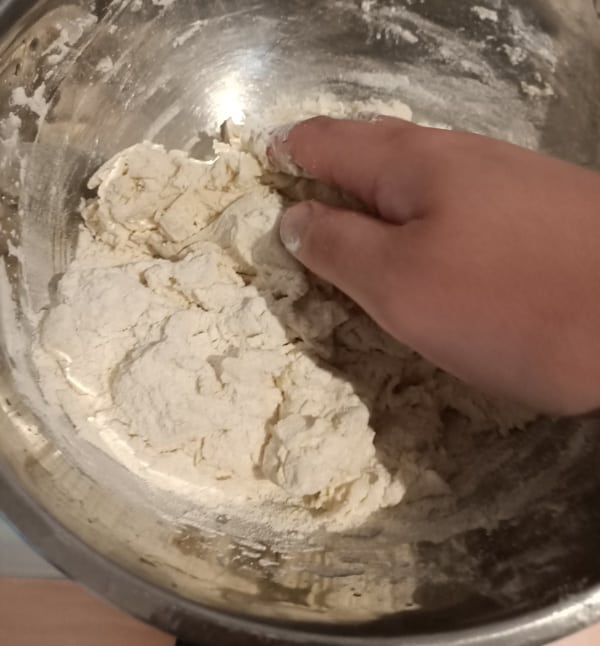
With that being said, let’s get into the sourdough pizza recipe.
The Ultimate Sourdough Pizza
This recipe will produce an authentic Neapolitan style sourdough pizza. I’ve made it easy to follow along with and to fit around your daily routine.

Be sure to check out my recipe for sourdough starter here before continuing with this recipe for sourdough pizza. It’s super easy to make!
You will need a healthy batch of sourdough starter first.
Makes 4 x 10 inch pizzas.
Note: Caputo 00 pizza flour is an excellent option, especially for Neapolitan style pizza. It is one of the more widely available “professional” pizza flours. I have provided a link to it on Amazon below (a large chef’s bag). Aside from this flour, most 00 flours should work fine.
Not all the following utensils are required but these are what I use and they tend to make the process much easier.
Any large bowl could be used for mixing the dough but I like using the metal ones since they’re lightweight, stackable, and easy to clean.
Click here to check out metal mixing bowls like the ones I have on Amazon.
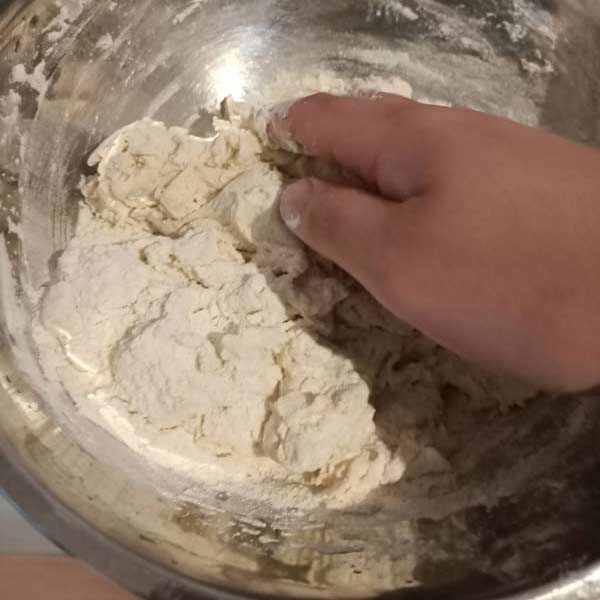
These are affordable, easy to use, and precise (accurate to 1g). I don't recommend using cups as measurements as they are inprecise.
Click here to take a look at the type of digital scales I use on Amazon.
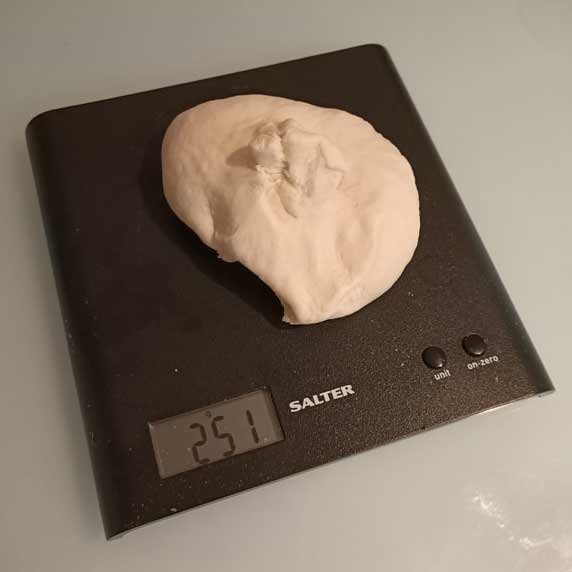
These kitchen scales are accurate to 0.01g and are perfect for measuring the tiny amounts of yeast needed for long proves.
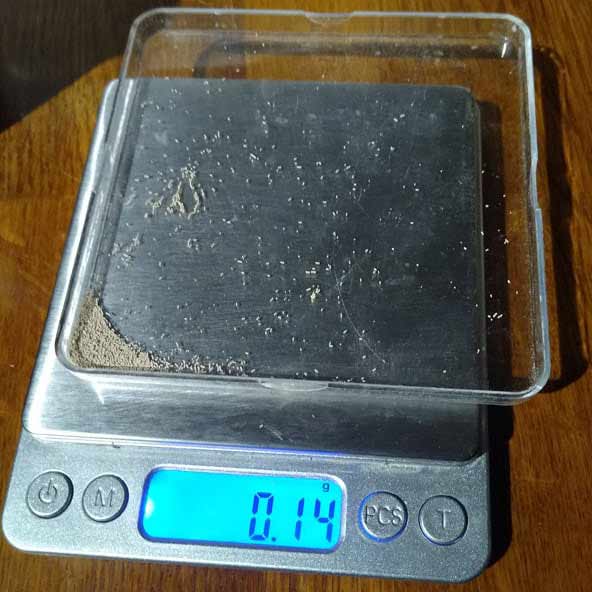
Pizza proofing boxes are an excellent investment. They are airtight and they make taking the dough out for shaping very easy.
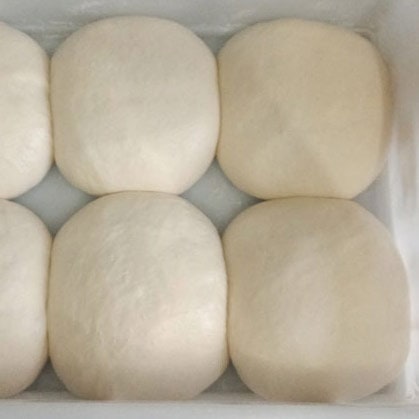
An infrared thermometer allows you to instantly check the temperature of the stone, ensuring it is within the ideal range.
Click here to check out a pizza peel similar to the one I use on Amazon.
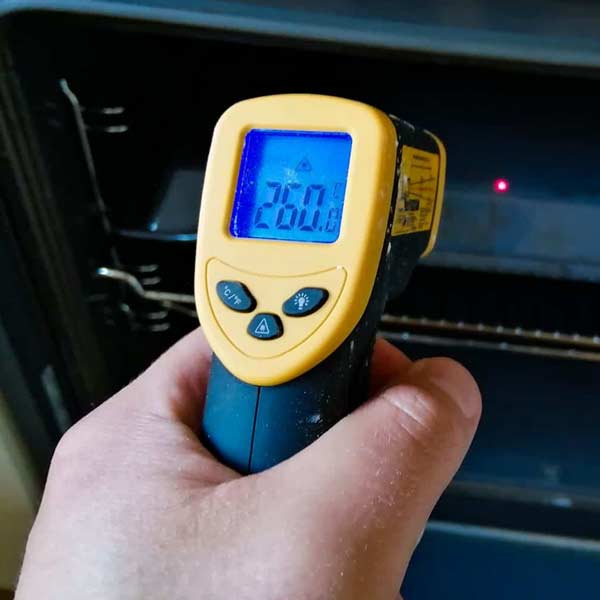
A 12 inch peel is ideal for Neapolitan pizza and makes loading and removing your pizza from the oven really easy.
Click here to check out a pizza peel similar to the one I use on Amazon.
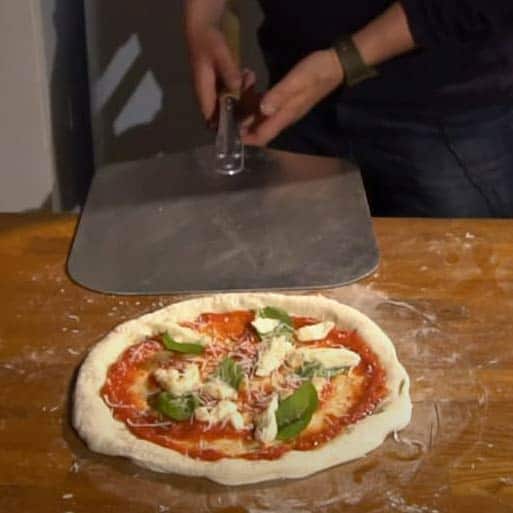
A turning peel is designed for rotating the pizza during cooking. If you're using a pizza oven it should lead to a superior and more even cook.
Click here to check out a pizza peel similar to the one I use on Amazon.
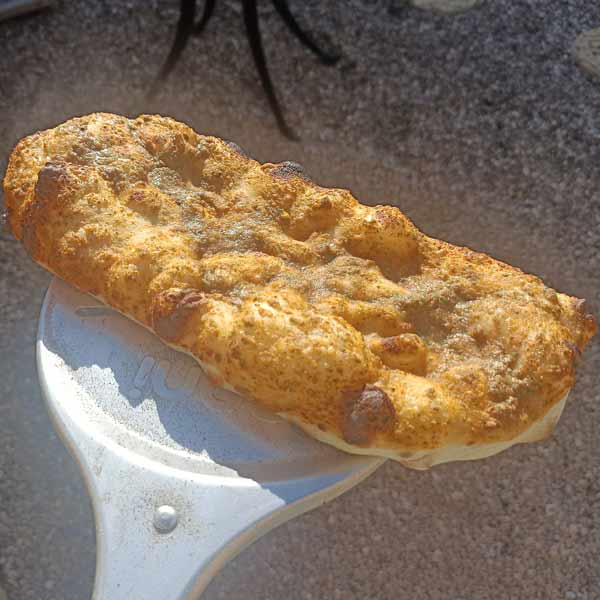
A pizza oven is guarenteed to take your pizzas to the next level. I have an Ooni Karu 16 which reaches 500C/930F and cooks pizza in as little as 60 seconds! A regular oven simply cannot match the cook of a pizza oven. I love my Ooni!
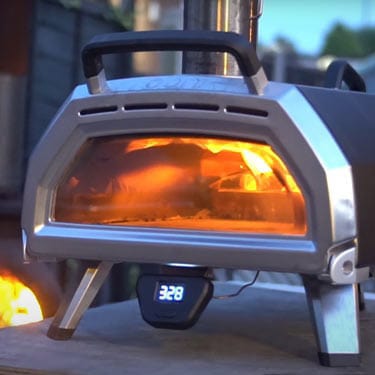

Follow this method to obtain 250g of sourdough starter which is perfect for use in the recipe. This is called “building a levain”. Check out my recipe on building a sourdough starter here before building this levain.
Once you have your levain built (250g sourdough starter) and it’s ripe (after 8-12 hours), you’re ready to mix the ingredients.
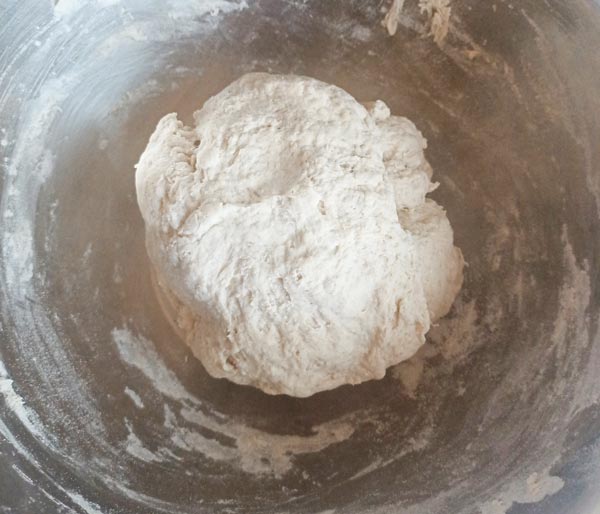
The dough should look something like this after mixing
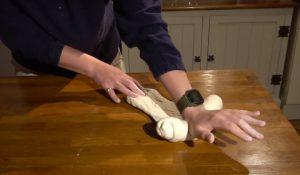
The dough can be kneaded in just 5 minutes by hand
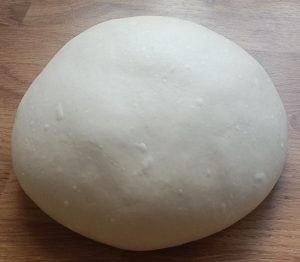
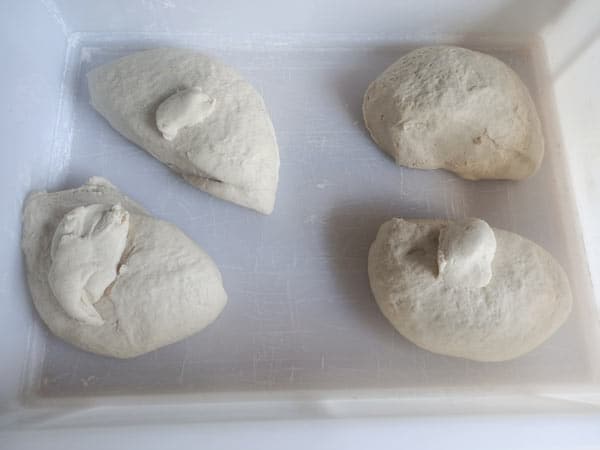
You can weigh the dough out for more accuracy – we’ll shape them after a short rest
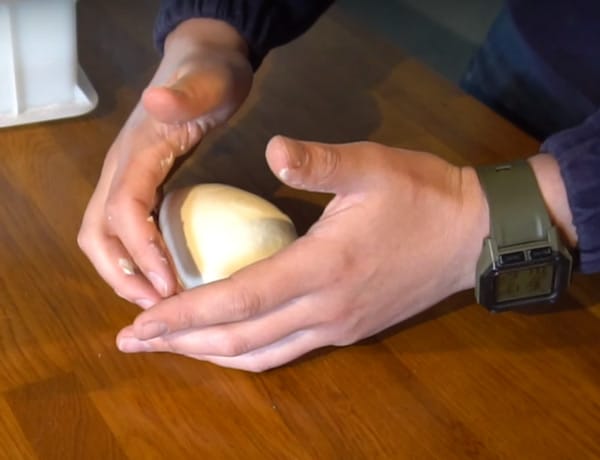
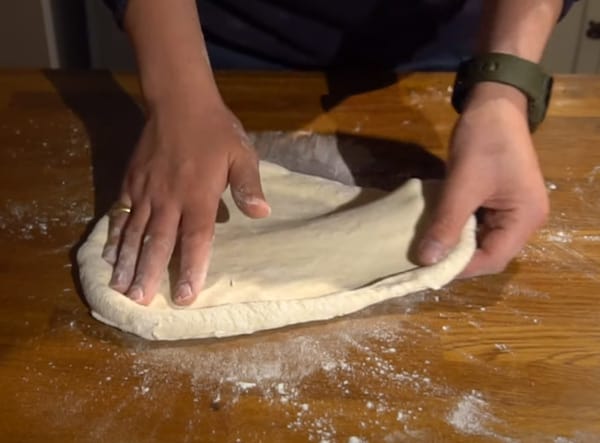
Check out my shaping article (with a video) here
Follow the steps below for a simple, authentic Margherita. For a vegan recipe, you can skip the cheese and add sliced garlic and frsh oregano for a traditional Marinara.
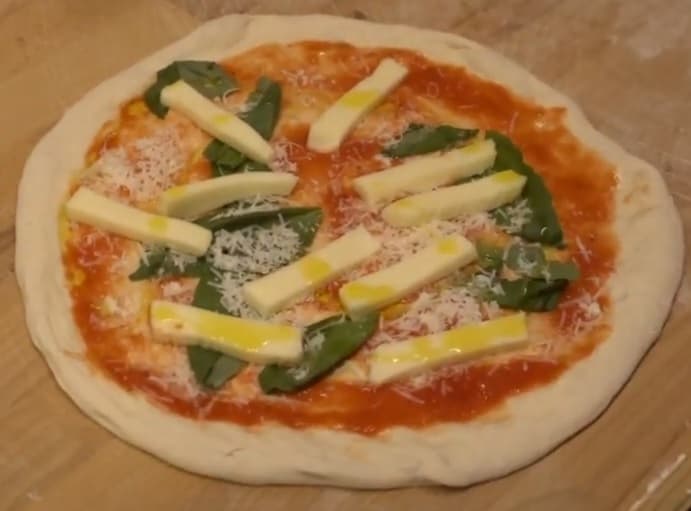
Personally, I think a classic Margherita is the best way to enjoy the sourdough pizza dough, at least initially. The toppings allow you to fully taste the sourdough without overpowering it.

Removing some moisture from fresh mozzarella helps to prevent soggy pizza
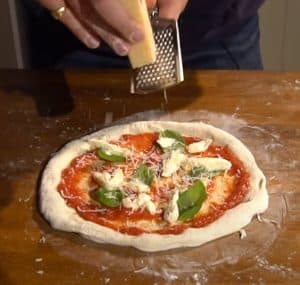
Parmesan and basil can be added before or after cooking (or not at all)
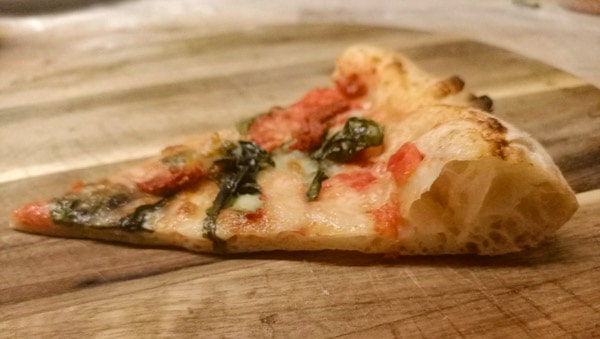
Overall recipe notes
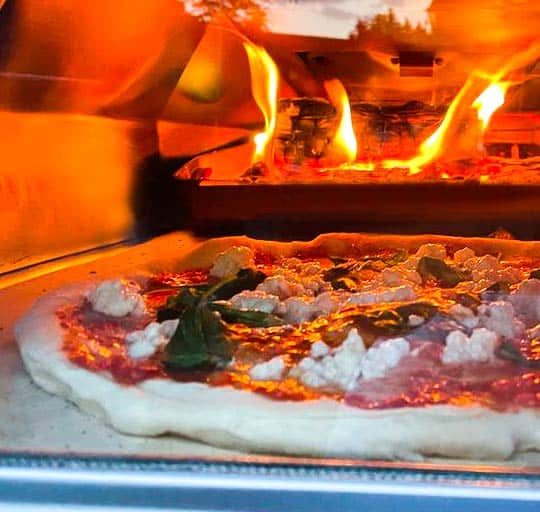
Pizza I made using this sourdough pizza recipe – cooked in my Ooni Karu 16
Notes on the starter
Some people prefer to keep a large quantity of “mother” starter so they could take 200g directly from that (without feeding). However, there are 3 main drawbacks to this:
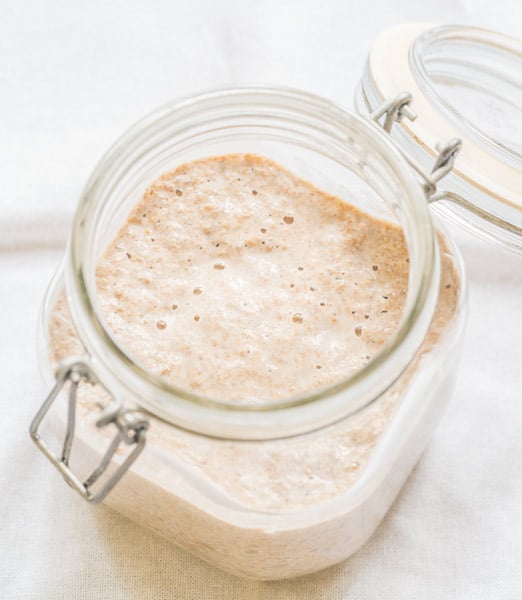

Hopefully now you have all the tools you need to make incredible sourdough pizza! It’s really not difficult, it just takes a bit of time to get your head around it.
Sourdough really is a thing of beauty, and most people have never tried sourdough pizza. I like sharing it with friends and seeing their reactions for the first time!

Here’s one I made for some friends on a pizza night!
As always, if you have any questions feel free to leave them in the comments below. I’ll get back to you as soon as I can
Good luck!
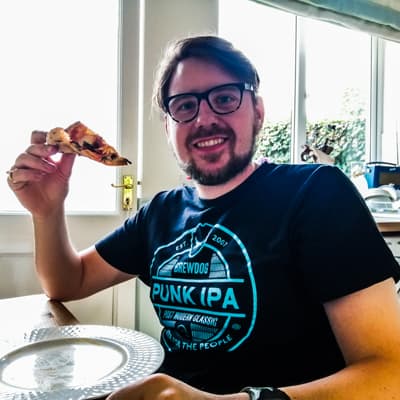
I’m Tom Rothwell and I’m super passionate about all kinds of homemade pizza! In the last few years I've been on a quest to find the perfect pizza. Now I'm sharing what I've found out with the world!

If you're interested in hiring me for your event in the UK, feel free to check out my website with the link below.
Pizza Catering

I often get asked what type of oven I use for my pizzas. Well, I use a pizza oven made by a company called Ooni.
The range of pizza ovens that Ooni offers is just brilliant. They cover all bases, and all price points. There's affordable and portable models such as the Fyra 12 Pizza Oven and then there's state-of-the-art models such as the Karu 16 Pizza Oven pictured below.
In all honesty, I would say that the oven makes a huge difference. If you're looking to make authentic Italian pizza, a pizza oven is a must.
By clicking the link below and purchasing from Ooni, you would be supporting this website. I've been using their ovens for a long time now and I wouldn't recommend them if I didn't believe in their products.
Time to make some amazing pizza!

I’m Tom Rothwell and I’m super passionate about all kinds of homemade pizza! In the last few years I've been on a quest to find the perfect pizza. Now I'm sharing what I've found out with the world!

If you're interested in hiring me for your event in the UK, feel free to check out my website with the link below.
Pizza Catering